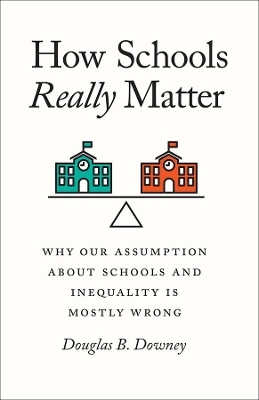
How Schools Really Matter
University of Chicago Press (Verlag)
978-0-226-73322-7 (ISBN)
How Schools Really Matter offers a firm rebuke to those who find nothing but fault in our schools, which are doing a much better than job than we give them credit for. It should also be a call to arms for educators and policymakers: the bottom line is that if we are serious about reducing inequality, we are going to have to fight some battles that are bigger than school reform--battles against the social inequality that is reflected within, rather than generated by--our public school system.
Douglas B. Downey is professor of sociology at the Ohio State University.
Introduction
Part I: Why We Shouldn’t Be Blaming Schools So Much
Chapter 1: The Forgotten 87 Percent Herbert Walberg’s outrageous claim
Trying to understand how schools matter when you have an eight-hundred-pound gorilla problem
Chapter 2: Chickens, Eggs, and Achievement Gaps When do achievement gaps emerge?
Scaling matters
Why the early years are so important
Relative deprivation matters too
Conclusion
Chapter 3: One Very Surprising Pattern about Schools Soccer coaches and schools
Trying to understand how schools matter
Seasonal comparisons
What do we learn from the few studies that have collected data seasonally?
Conclusion
Chapter 4: And Now a Second, Even More Surprising Pattern School achievement, growth, and impact
Objections
Conclusion
Part II: A New Way to Think about Schools and Inequality
Chapter 5: More Like Reflectors than Generators Schools generating inequality
Two examples of schools reflecting broader society
What about those high-flying schools?
Underestimating early childhood
Conclusion: A diminished role for schools, an enhanced role for early childhood
Chapter 6: As Helping More than Hurting Schools as compensatory: The weak form
Schools as compensatory: The strong form
Conclusion
Chapter 7: A Frida Sofia Problem Schools and inequality: Stuck within the traditional framing
Our value for limited government
Fear of “blaming the victim”
Gender and the vulnerability of schools
Conclusion
Chapter 8: The Costly Assumption Rich guys trying to reduce achievement gaps
The never-ending quest to reform schools
The great distractor
So what should we do?
Acknowledgments
Appendix A: The Early Childhood Longitudinal Datasets (ECLS-K:1998 and ECLS-K:2010)
Appendix B: Limitations of Seasonal Comparison Studies
Appendix C: How Should Social Scientists Study Schools and Inequality?
Notes
References
Index
| Erscheinungsdatum | 20.11.2020 |
|---|---|
| Sprache | englisch |
| Maße | 133 x 210 mm |
| Themenwelt | Sozialwissenschaften ► Pädagogik |
| Sozialwissenschaften ► Soziologie | |
| ISBN-10 | 0-226-73322-X / 022673322X |
| ISBN-13 | 978-0-226-73322-7 / 9780226733227 |
| Zustand | Neuware |
| Haben Sie eine Frage zum Produkt? |
aus dem Bereich


